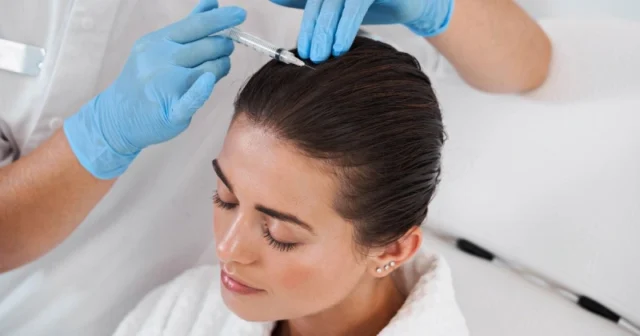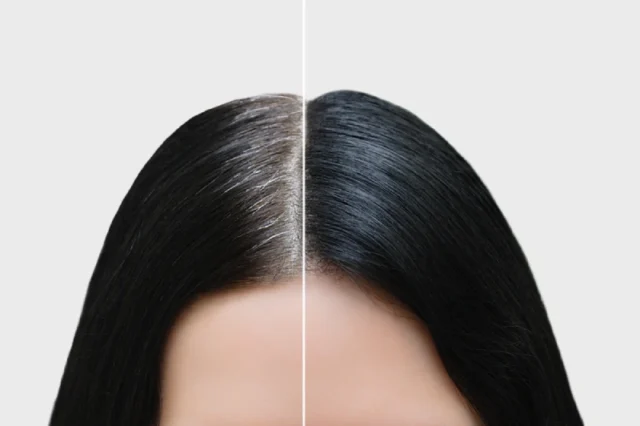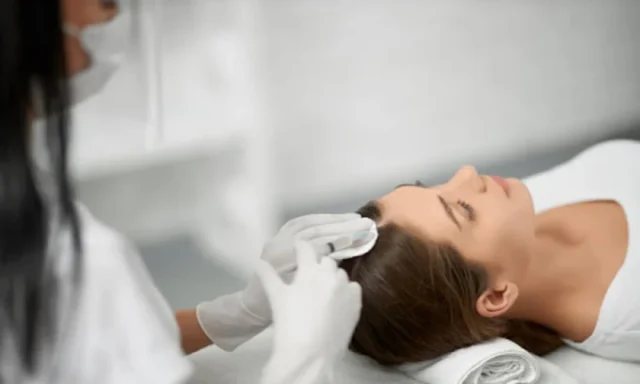When it comes to hair loss, navigating the myriad of treatment options can be overwhelming. Two of the most talked-about solutions are Platelet-Rich Plasma (PRP) therapy and Mesotherapy, both promising a revamp for those seeking thicker, healthier hair. But which one truly delivers on that promise? PRP therapy harnesses the healing power of your own blood, rejuvenating follicles from within, while Mesotherapy utilizes a cocktail of vitamins, minerals, and medications to nourish hair and stimulate growth. In this article, we’ll dive deep into the mechanisms, benefits, and potential drawbacks of each treatment, helping you make an informed decision tailored to your unique needs. Join us as we unravel the science and success stories behind PRP and Mesotherapy, guiding you toward the path best suited for combating hair loss effectively. Your journey to revitalized hair starts here!
Understanding Hair Loss: Causes and Effects
Hair loss is a common concern that affects millions of people worldwide, transcending age, gender, and ethnicity. The causes of hair loss can be multifaceted, ranging from genetic predispositions to hormonal imbalances, and even lifestyle choices. One of the most common types of hair loss is androgenetic alopecia, commonly known as male or female pattern baldness, which is largely driven by genetics and hormonal factors. This condition results in the progressive thinning of hair, often leading to partial or complete baldness over time.
Environmental factors such as stress, poor diet, and exposure to pollutants can exacerbate hair loss. Nutritional deficiencies, particularly a lack of essential vitamins and minerals, can weaken hair follicles and impede their growth cycle. Stress, both physical and emotional, can trigger a condition known as telogen effluvium, where hair prematurely enters the shedding phase. Additionally, certain medical conditions, like thyroid disorders and autoimmune diseases, can contribute to excessive hair shedding and hair thinning.
The psychological impact of hair loss can be profound, affecting self-esteem and overall quality of life. Many individuals experiencing hair loss report feelings of embarrassment, anxiety, and even depression. The quest for effective hair loss treatments is not just about restoring physical appearance but also about reclaiming confidence and emotional well-being. Understanding the underlying causes of hair loss is crucial in selecting the most appropriate and effective treatment, setting the stage for the exploration of PRP therapy and Mesotherapy.
Overview of PRP (Platelet-Rich Plasma) Therapy
Platelet-Rich Plasma (PRP) therapy is an innovative and increasingly popular treatment for hair loss that leverages the body’s natural healing mechanisms. PRP therapy involves the extraction and concentration of platelets from the patient’s own blood, which are then injected into the scalp to stimulate hair growth. The procedure begins with a blood draw, typically from the patient’s arm, followed by the separation of platelets using a centrifuge. The resulting platelet-rich plasma is rich in growth factors and proteins that promote tissue regeneration and healing.
PRP therapy is founded on the principle that platelets, a type of blood cell, play a critical role in the body’s natural repair processes. When injected into the scalp, the concentrated platelets release growth factors that stimulate hair follicles, promoting new hair growth and strengthening existing hair. The treatment is minimally invasive and can be performed in a clinical setting, often requiring a series of sessions for optimal results.
The appeal of PRP therapy lies in its natural approach to hair restoration, utilizing the patient’s own biological materials to encourage hair regrowth. This reduces the risk of allergic reactions or adverse side effects, making it a suitable option for many individuals. As we delve deeper into the mechanics and benefits of PRP therapy, it becomes evident why this treatment has garnered significant attention in the realm of hair restoration.
How PRP Therapy Works for Hair Regrowth
PRP therapy for hair regrowth operates on the principle of utilizing the body’s inherent repair mechanisms to rejuvenate hair follicles. The treatment process begins with the collection of a small blood sample from the patient, which is then processed in a centrifuge to separate the platelet-rich plasma from other blood components. The concentrated PRP, rich in growth factors such as platelet-derived growth factor (PDGF), vascular endothelial growth factor (VEGF), and transforming growth factor (TGF), is then prepared for injection.
Once the PRP is ready, it is meticulously injected into the areas of the scalp affected by hair thinning or loss. These growth factors work synergistically to stimulate the hair follicles’ stem cells, promoting the transition of follicles from a dormant state to an active growth phase. This process enhances the health and density of hair, resulting in thicker and more robust hair strands. Additionally, PRP therapy improves blood circulation to the scalp, ensuring that hair follicles receive the essential nutrients and oxygen needed for optimal growth.
The regenerative properties of PRP therapy are not limited to hair regrowth alone. The treatment also helps in reducing scalp inflammation, which is often a contributing factor to hair loss. By addressing inflammation and promoting a healthier scalp environment, PRP therapy facilitates long-term hair health and maintenance. The gradual but noticeable improvement in hair density and quality makes PRP therapy a compelling option for those seeking a natural and effective solution for hair loss.
Benefits of PRP Therapy for Hair Loss
The benefits of PRP therapy for hair loss are multifaceted, making it a highly sought-after treatment for individuals looking to combat hair thinning and baldness. One of the primary advantages of PRP therapy is its ability to stimulate natural hair growth without the need for synthetic chemicals or invasive surgical procedures. By harnessing the body’s own healing mechanisms, PRP therapy offers a safe and biocompatible solution for hair restoration.
Another significant benefit of PRP therapy is its minimal risk of adverse reactions. Since the treatment uses the patient’s own blood, the likelihood of allergic reactions, infections, or other complications is greatly reduced. This makes PRP therapy a suitable option for individuals with sensitivities or those who prefer a more holistic approach to hair restoration. Additionally, PRP therapy is relatively quick and can be performed in an outpatient setting, allowing patients to resume their normal activities shortly after treatment.
The efficacy of PRP therapy is supported by numerous clinical studies and patient testimonials. Many individuals report noticeable improvements in hair density, thickness, and overall quality after undergoing PRP therapy. The treatment not only helps in regrowing lost hair but also strengthens existing hair, making it more resilient to future hair loss. The cumulative benefits of PRP therapy, coupled with its natural and safe approach, make it an attractive option for those seeking a reliable and effective solution for hair loss.
Overview of Mesotherapy for Hair Loss
Mesotherapy is another popular treatment for hair loss that involves the injection of a specialized cocktail of vitamins, minerals, amino acids, and medications directly into the scalp. Developed in France in the 1950s, mesotherapy has since gained global recognition for its versatility in treating various cosmetic and medical conditions, including hair loss. The goal of mesotherapy for hair loss is to deliver essential nutrients directly to the hair follicles, thereby stimulating hair growth and improving scalp health.
The formulation used in mesotherapy can be customized to meet the specific needs of the patient. Common ingredients include biotin, vitamins B and C, amino acids, and minerals such as zinc and copper. In some cases, medications like minoxidil or finasteride may also be included to enhance the treatment’s efficacy. The injection process involves the use of fine needles to administer the nutrient-rich solution into the middle layer of the skin, known as the mesoderm, where it can directly nourish the hair follicles.
Mesotherapy is typically performed in a series of sessions, with each session lasting between 30 to 60 minutes. The frequency and number of sessions required can vary depending on the severity of hair loss and the patient’s response to treatment. Mesotherapy is minimally invasive and involves little to no downtime, making it a convenient option for individuals with busy lifestyles. As we explore the mechanisms and key ingredients of mesotherapy, we’ll gain a deeper understanding of how this treatment can benefit those struggling with hair loss.
How Mesotherapy Works and Its Key Ingredients
Mesotherapy works by delivering a potent mixture of vitamins, minerals, amino acids, and medications directly to the hair follicles. This targeted approach ensures that the hair follicles receive the essential nutrients needed for optimal growth and health. The treatment process involves the use of fine needles to inject the nutrient-rich solution into the mesoderm, the middle layer of the skin. This layer is where the hair follicles are located, making it the ideal site for delivering the therapeutic ingredients.
The key ingredients used in mesotherapy can vary based on the specific needs of the patient. Common ingredients include biotin, a vitamin that plays a crucial role in maintaining healthy hair and promoting hair growth. Vitamins B and C are also frequently used, as they help improve blood circulation to the scalp and strengthen the hair shaft. Amino acids, the building blocks of proteins, are essential for the production of keratin, the protein that makes up hair. Minerals such as zinc and copper are included for their role in maintaining scalp health and preventing hair loss.
In some cases, medications like minoxidil or finasteride may be added to the mesotherapy cocktail to enhance its efficacy. Minoxidil is a well-known topical treatment for hair loss that helps stimulate hair growth and increase hair density. Finasteride, an oral medication, works by inhibiting the hormone responsible for androgenetic alopecia. By combining these medications with essential nutrients, mesotherapy provides a comprehensive approach to treating hair loss and promoting hair regrowth.
Benefits of Mesotherapy for Hair Loss
Mesotherapy offers several advantages for individuals seeking to address hair loss and improve scalp health. One of the primary benefits of mesotherapy is its ability to deliver a customized blend of nutrients directly to the hair follicles. This targeted approach ensures that the hair follicles receive the essential vitamins, minerals, and amino acids needed for optimal growth and health. By nourishing the hair follicles from within, mesotherapy can help stimulate hair growth, increase hair density, and improve the overall quality of hair.
Another significant benefit of mesotherapy is its versatility in addressing various types of hair loss. Whether the hair loss is due to genetic factors, hormonal imbalances, or nutritional deficiencies, mesotherapy can be tailored to meet the specific needs of the patient. The ability to customize the treatment cocktail allows for a more personalized approach, increasing the likelihood of achieving positive results. Additionally, mesotherapy is minimally invasive and involves little to no downtime, making it a convenient option for individuals with busy lifestyles.
Mesotherapy also offers a natural and holistic approach to hair restoration. By using a blend of vitamins, minerals, and amino acids, mesotherapy provides the hair follicles with the essential nutrients needed for healthy growth. This reduces the reliance on synthetic chemicals and medications, making it a suitable option for individuals who prefer a more natural approach to hair restoration. The cumulative benefits of mesotherapy, coupled with its versatility and convenience, make it an attractive option for those seeking an effective solution for hair loss.
Comparing PRP and Mesotherapy: Effectiveness and Safety
When comparing PRP therapy and mesotherapy, several factors come into play, including effectiveness, safety, and the specific needs of the patient. Both treatments have their unique advantages and are backed by scientific research and clinical evidence. However, the choice between PRP therapy and mesotherapy ultimately depends on the individual’s specific hair loss condition, preferences, and treatment goals.
In terms of effectiveness, both PRP therapy and mesotherapy have been shown to stimulate hair growth and improve hair density. PRP therapy leverages the body’s natural healing mechanisms by using the patient’s own platelets to promote hair regrowth. This autologous approach ensures a high level of biocompatibility and reduces the risk of adverse reactions. Clinical studies have demonstrated the efficacy of PRP therapy in increasing hair density and promoting hair regrowth in individuals with androgenetic alopecia and other types of hair loss.
Mesotherapy, on the other hand, delivers a customized blend of nutrients and medications directly to the hair follicles. This targeted approach ensures that the hair follicles receive the essential vitamins, minerals, and amino acids needed for optimal growth. The ability to tailor the treatment cocktail to meet the specific needs of the patient allows for a more personalized approach, increasing the likelihood of achieving positive results. Mesotherapy has also been shown to be effective in promoting hair growth and improving hair density, particularly in cases of hair loss due to nutritional deficiencies or hormonal imbalances.
In terms of safety, both PRP therapy and mesotherapy are considered minimally invasive and involve little to no downtime. PRP therapy’s use of the patient’s own blood reduces the risk of allergic reactions or infections. Mesotherapy, while involving the injection of a nutrient-rich solution, is generally well-tolerated and has a low risk of adverse effects. The choice between PRP therapy and mesotherapy ultimately depends on the individual’s specific needs, preferences, and treatment goals. Consulting with a qualified healthcare professional can help determine the most appropriate treatment for each individual.
Factors to Consider When Choosing a Treatment
Choosing the right treatment for hair loss involves considering several factors, including the underlying cause of hair loss, the individual’s medical history, and personal preferences. Understanding these factors can help individuals make informed decisions and select the most appropriate treatment for their specific needs.
One of the primary factors to consider is the underlying cause of hair loss. Androgenetic alopecia, or genetic hair loss, may respond differently to treatments compared to hair loss caused by nutritional deficiencies or hormonal imbalances. PRP therapy, which leverages the body’s natural healing mechanisms, may be particularly effective for individuals with androgenetic alopecia. Mesotherapy, with its customized blend of nutrients and medications, may be more suitable for individuals with hair loss due to nutritional deficiencies or hormonal imbalances.
Another important factor to consider is the individual’s medical history and any underlying health conditions. Certain medical conditions, such as autoimmune disorders or thyroid problems, can contribute to hair loss and may require specific treatments. Additionally, individuals with a history of allergies or sensitivities may prefer treatments that minimize the use of synthetic chemicals or medications. Consulting with a qualified healthcare professional can help identify any underlying health conditions and determine the most appropriate treatment options.
Personal preferences and lifestyle considerations also play a role in choosing the right treatment. Some individuals may prefer a more natural approach to hair restoration, making PRP therapy an attractive option. Others may prioritize convenience and opt for mesotherapy due to its minimal downtime and customizable treatment approach. Ultimately, the choice between PRP therapy and mesotherapy depends on the individual’s specific needs, preferences, and treatment goals. Consulting with a qualified healthcare professional can help guide individuals in making informed decisions and selecting the most appropriate treatment for their unique needs.
Conclusion: Making an Informed Decision for Hair Loss Treatment
In the quest to combat hair loss and achieve thicker, healthier hair, both PRP therapy and mesotherapy offer promising solutions. Each treatment has its unique advantages and can be effective in stimulating hair growth and improving hair density. PRP therapy leverages the body’s natural healing mechanisms, using the patient’s own platelets to promote hair regrowth. This autologous approach ensures a high level of biocompatibility and reduces the risk of adverse reactions. Mesotherapy, on the other hand, delivers a customized blend of vitamins, minerals, and medications directly to the hair follicles, providing a targeted and personalized approach to hair restoration.
When choosing between PRP therapy and mesotherapy, it is important to consider the underlying cause of hair loss, the individual’s medical history, and personal preferences. Consulting with a qualified healthcare professional can help identify the most appropriate treatment for each individual’s unique needs and ensure the best possible outcomes. Both treatments have been shown to be effective in promoting hair growth and improving hair density, making them viable options for individuals seeking to address hair loss.
Ultimately, the decision between PRP therapy and mesotherapy should be based on a thorough understanding of the benefits, mechanisms, and potential drawbacks of each treatment. By making an informed decision and seeking guidance from healthcare professionals, individuals can embark on a path to revitalized hair and improved self-confidence. The journey to combating hair loss and achieving healthier hair begins with understanding the available treatment options and selecting the one that best aligns with individual needs and goals.






